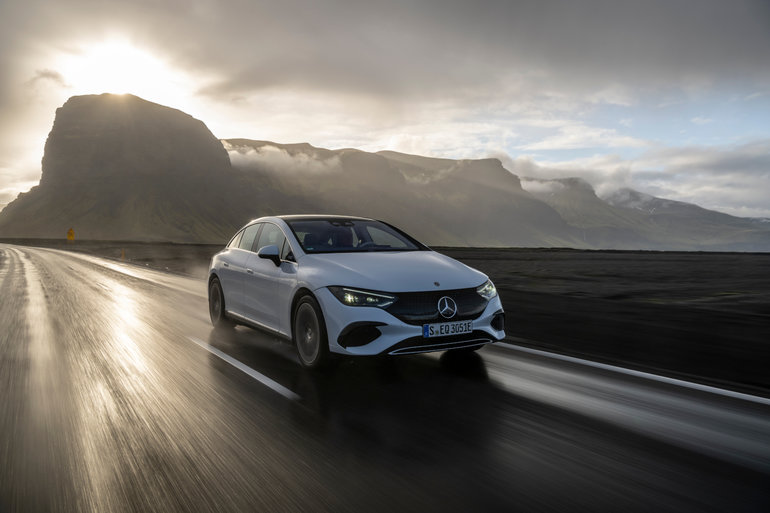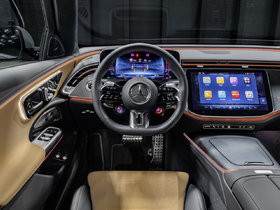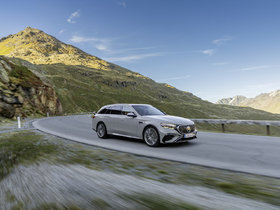Understanding the Mercedes-Benz Driver Assistance Technology: How DISTRONIC and Active Steering Assist Enhance Your Drive
April 03 2025,

Modern luxury vehicles offer more than premium materials and powerful engines – they provide sophisticated technology that fundamentally changes how we drive. The Mercedes-Benz lineup features driver assistance systems that represent the culmination of decades of safety innovation and technological advancement.
These intelligent systems work together to monitor your surroundings, help maintain safe distances from other vehicles, keep you centered in your lane, and even assist with emergency maneuvers. But how exactly do features like DISTRONIC and Active Steering Assist function? This article breaks down the technology behind these sophisticated systems and explains how they enhance your driving experience.
The Core Systems Behind Mercedes-Benz Driver Assistance
The Mercedes-Benz driver assistance package relies on a network of interconnected sensors, cameras, and radar units strategically positioned throughout the vehicle. This digital nervous system constantly gathers and processes data about your surroundings at rates of up to 100 times per second.
At the heart of this system is the central control unit – essentially the brain that interprets all incoming data and coordinates responses across multiple vehicle systems. This processor analyzes everything from the distance to vehicles ahead to lane markings and potential obstacles, creating a digital representation of the road environment.
What makes the Mercedes-Benz systems particularly advanced is their ability to predict movement patterns of surrounding traffic and anticipate potential hazards before they develop into dangerous situations. This predictive capability is what separates basic driver aids from the sophisticated assistance technologies found in current Mercedes-Benz vehicles.
DISTRONIC: Advanced Adaptive Cruise Control
DISTRONIC is Mercedes-Benz's adaptive cruise control system, but it goes well beyond maintaining a set speed. The current version utilizes front-facing radar sensors with a range of up to 250 metres to detect vehicles ahead and automatically adjust your speed to maintain a safe following distance.
The system can bring the vehicle to a complete stop in traffic and automatically resume driving when traffic moves again (within a specified time limit). DISTRONIC also incorporates navigation data to intelligently reduce speed before curves, intersections, or when approaching exit ramps, providing a more natural driving experience.
What truly distinguishes the current DISTRONIC system is its ability to recognize and react to complex traffic situations. For example, it can detect when a vehicle cuts into your lane and smoothly adjust speed without abrupt braking. The system even considers adjacent lanes when planning speed adjustments, creating a driving experience that feels intuitive rather than mechanical.
Active Steering Assist: Beyond Lane Keeping
While basic lane keeping systems simply warn when you drift out of your lane, the Mercedes-Benz Active Steering Assist provides subtle steering corrections to keep you centered without requiring constant driver input. The system uses cameras to detect lane markings and applies gentle steering torque when needed.
What's remarkable about the current generation of Active Steering Assist is its ability to function even when lane markings are unclear or temporarily absent. The system can follow the vehicle ahead at speeds up to 210 km/h and maintain proper positioning within the lane even on roads with construction or faded markings.
Active Steering Assist works in harmony with DISTRONIC to provide semi-automated driving capabilities that reduce driver fatigue on long journeys. The system doesn't remove the need for driver attention – hands must remain on the wheel – but it significantly reduces the physical and mental workload, especially during highway driving or stop-and-go traffic situations.
Radar and Camera Systems: The Digital Eyes
The Mercedes-Benz driver assistance technology relies on multiple sensor types that complement each other. The primary components include:
- Multi-mode radar sensors: These provide precise distance measurements and relative speed calculations for objects in front of and behind the vehicle. Unlike single-frequency radar, multi-mode systems can better distinguish between different types of objects.
- Stereo multi-purpose camera: Positioned near the rearview mirror, this dual-lens camera provides depth perception similar to human vision, allowing the system to estimate distances to objects and identify their nature.
- Ultrasonic sensors: These short-range sensors detect objects within approximately 4 metres of the vehicle, particularly useful for parking assistance and detecting obstacles in blind spots.
The brilliance of the Mercedes-Benz system lies not in any single sensor but in how it fuses this information. When one sensor's vision is compromised – for instance, when bright sunlight blinds cameras – other sensors compensate, ensuring continuous protection.
Real-World Applications and Limitations
While the Mercedes-Benz driver assistance systems provide substantial benefits, understanding their limitations is crucial for safe operation. These systems excel on highways with clear markings but may be less effective in conditions like heavy rain, snow, or roads with inconsistent markings.
The radar systems can occasionally misinterpret certain objects – for example, a metal guardrail on a curve might briefly register as a vehicle. The system is designed to err on the side of caution, sometimes resulting in unnecessary but safe braking events.
The most important limitation to remember is that these remain assistance systems, not autonomous driving technology. They require an attentive driver with hands on the wheel and eyes on the road. The technology is designed to support your driving, not replace your judgment.
Enhancing Safety Through Intelligent Assistance
The Mercedes-Benz driver assistance package represents an impressive blend of sensors, processors, and actuators working together to create a safer driving experience. From maintaining perfect distances in traffic to helping you stay centered in your lane, these systems provide subtle but significant support during every journey.
To experience these technologies firsthand and discover how they can transform your daily commute, visit Mercedes-Benz Ottawa Downtown. Our product specialists can demonstrate each feature and help you understand how these sophisticated systems can enhance both safety and comfort on your next drive.





